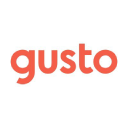From Being A Musician To Founding A $108K/Year Social Network Company
Note: This business is no longer running. It was started in 2020 and ended in 2025. Reason for closure: Shut down.
Hello! Who are you and what business did you start?
My name is Mat Sherman and I am the founder of Seedscout. Seedscout is a social network that runs 100% on intro requests and introductions between all of its users, specifically in the startup community.
The three types of users we have are founders, investors, and job seekers. Once a user receives an intro request, they can either accept the intro, which connects the two users, or reject the intro request.
If rejected, the requesting user gets an email saying their intro request was denied. Right now, Seedscout makes about $9,000 a month from 65 paying users. In total, we have over 1,500 users on the platform who are open to intro requests.

What's your backstory and how did you come up with the idea?
I was born and raised in Phoenix Arizona, which is where I started my first try at...

Download the report and join our email newsletter packed with business ideas and money-making opportunities, backed by real-life case studies.

Download the report and join our email newsletter packed with business ideas and money-making opportunities, backed by real-life case studies.

Download the report and join our email newsletter packed with business ideas and money-making opportunities, backed by real-life case studies.

Download the report and join our email newsletter packed with business ideas and money-making opportunities, backed by real-life case studies.

Download the report and join our email newsletter packed with business ideas and money-making opportunities, backed by real-life case studies.

Download the report and join our email newsletter packed with business ideas and money-making opportunities, backed by real-life case studies.

Download the report and join our email newsletter packed with business ideas and money-making opportunities, backed by real-life case studies.

Download the report and join our email newsletter packed with business ideas and money-making opportunities, backed by real-life case studies.
































